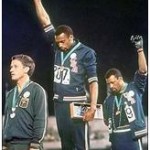 When I was a child, a hug from my teacher was comforting and encouraging. Giving a hug to a favorite teacher showed my appreciation. But today conscientious teachers are afraid to touch or be touched by students. What’s more, a student displaying physical affection toward a teacher or another student could face suspension.
When I was a child, a hug from my teacher was comforting and encouraging. Giving a hug to a favorite teacher showed my appreciation. But today conscientious teachers are afraid to touch or be touched by students. What’s more, a student displaying physical affection toward a teacher or another student could face suspension.
Such was the case on December 3, when Sam McNair, a 17-year-old high school senior in Duluth, Georgia, was suspended for sexual harassment because he hugged his teacher. A week earlier, six year old first grader, Hunter Yelton, was suspended from a Colorado school for kissing his female classmate on the hand. Following a wave of negative publicity, the Colorado school system lifted the suspension. People tend to regard the action of the six year old as innocent and impulsive, but some are less forgiving of the high school senior.
I queried a few teachers on the subject and have summarized their views below. To protect their privacy, I’ve used bullets instead of names to represent each teacher’s remarks. Here is what they had to say.



